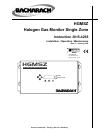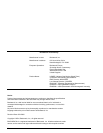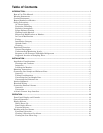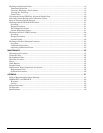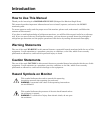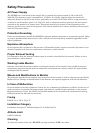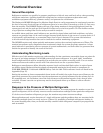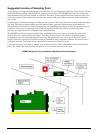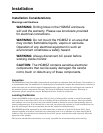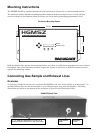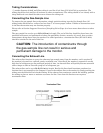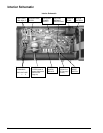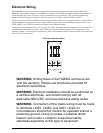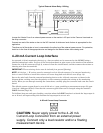
Instruction 3015-4256 3
Functional Overview
General Description
Refrigerant monitors are specified to support compliance to federal, state and local safety codes governing
refrigerant emissions. Avoiding significant refrigerant loss reduces equipment replacement costs,
maintains equipment efficiency, promotes safety, and protects the environment.
The Bacharach HGMSZ (Halogen Gas Monitor Single Zone) is easily programmed to continuously monitor
the level of any one of several types of refrigerant gases in an area that is located up to 50 ft (15.2 m) away
from the monitor. The HGMSZ displays the type of gas being monitored, along with displaying both the
current gas level and the peak gas level detected in that area on its front panel LCD. The monitor retains
a log of previous readings that can be easily accessed for analysis.
An audible alarm and front panel indicators are provided to signal alarm and fault conditions, and relay
contacts are provided that can be used to trigger external alarm devices in the event of a system fault, or if
a leak (small), spill (medium), or evacuation (large) level of gas is detected. The system also includes a
4−20 mA current loop interface that can be connected to remote monitoring equipment.
The HGMSZ requires only minor periodic maintenance such as the occasional replacement of filters. The
monitor incorporates active diagnostics that continuously check the system for proper operation. A front
panel indicator is provided to alert an operator of system malfunctions, and fault codes are generated that
enable the operator to identify the cause of the fault.
Understanding Monitoring Levels
Effective use of this monitor requires an understanding of what constitutes reasonable alarm set points for
the type of gas being monitored. All AC&R systems leak some refrigerant. In a good “tight” installation
these background levels will be acceptably low and often do not require corrective action. You can reduce
nuisance alarms and needless service calls if the alarm levels are set at practical limits.
Refrigerant manufacturers define allowable exposure levels and threshold limit values in units of parts
per million (ppm). Bacharach has developed recommended monitoring levels based on compliance to
ANSI/BSR ASHRAE 15-1994 and ASHRAE Safety Code 34-1992. These reference levels are listed in the
Appendix (Page 27).
Setting the monitor at these recommended alarm levels will satisfy the needs of most users. However, the
ppm levels generated by system leaks into the environment are greatly influenced by the volume of air in
the sampling area, air circulation, size of the leak, distance to the monitoring point, and a host of other
variables. In some cases the set points may need to be adjusted either up or down to achieve effective
monitoring.
Response to the Presence of Multiple Refrigerants
The HGMSZ is a refrigerant level monitor, not a gas analyzer. You must program the monitor to test for a
specific refrigerant, and it will only return accurate concentration readings for that particular refrigerant.
If a leak occurs of another refrigerant gas type, the monitor may return incorrect readings.
Most applications only require detection of a single refrigerant and the problems that are associated with
monitoring multiple gases are rarely an issue. If there is a possibility of multiple refrigerants leaking in
the same sampling zone, then you should carefully consider which refrigerant compound you program the
unit to monitor.



